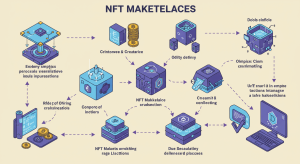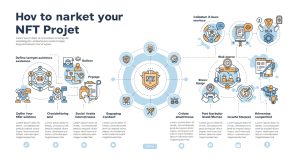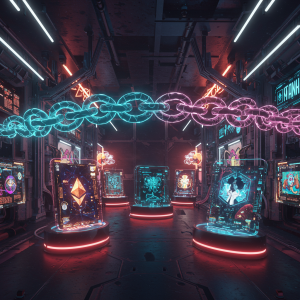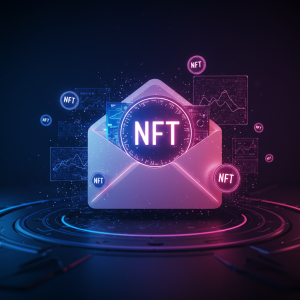How to Generate Your NFT
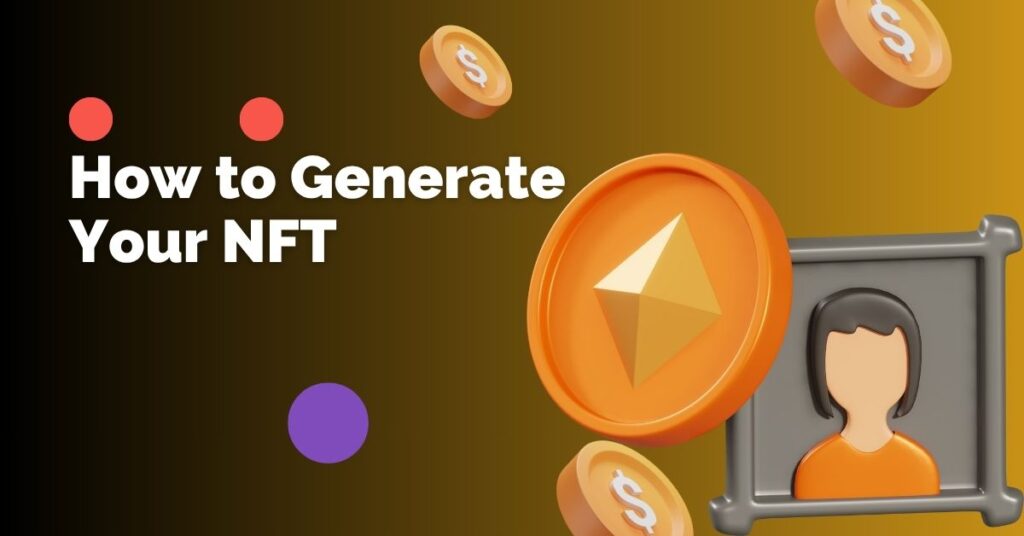
NFTs, or non-fungible tokens, are revolutionizing the digital world by giving creators the power to authenticate, sell, and connect with their audience in entirely new ways. Whether you’re an artist, a musician, or a writer, learning how to create and generate your own NFT opens the door to a global marketplace and unprecedented opportunities.
If you’ve been intrigued by the possibilities of NFTs but feel overwhelmed by the technical side of things, you’re in the right place. This guide will walk you through the step-by-step process of generating your very first NFT. Let’s unlock the potential of your creative work!
Understanding NFTs
Before we jump into the how-to, let’s nail down the basics.
What is an NFT?
An NFT is a unique digital asset that exists on a blockchain. Unlike cryptocurrencies like Bitcoin, each NFT is one of a kind, representing ownership of a specific item, be it digital art, music, videos, or even virtual real estate.
The contents of an NFT can’t be swapped on a one-to-one basis as they hold different values. For example, a token verifying ownership of a Beeple artwork is vastly different in worth compared to one authenticating a meme.
NFTs are unique because they are stored securely on blockchains like Ethereum, making their ownership transparent, traceable, and tamper-proof.
Why Should You Create an NFT?
If you’re a content creator, here are a few reasons to consider stepping into the NFT space:
- Ownership: NFTs give creators complete rights over unique pieces of digital work.
- Income Streams: NFTs allow for the direct sale of digital assets to collectors, with the added ability to earn royalties whenever the NFT changes hands.
- Global Reach: NFTs can be sold on global NFT marketplaces, expanding the audience far beyond traditional platforms.
Now that you know the basics, let’s move forward to generating your own NFT.
Steps to Generate Your NFT
Creating your own NFT might sound technical, but breaking it down into manageable steps makes it far simpler than you imagine.
1. Choose Your Asset
First and foremost, decide what digital content you’d like to turn into an NFT. This could be:
- A piece of digital art or illustration
- An original music track or album
- A video or animation
- A GIF or meme
- A piece of written work (e.g., a poem or short story)
Pro tip: Make sure that you hold the legal rights to the digital asset you are turning into an NFT. Using copyrighted materials without permission can lead to legal troubles.
2. Select a Blockchain Platform
Blockchains are the backbone of NFT creation. Choosing the right one will impact where and how you trade your NFT.
Popular blockchain networks for NFTs include:
- Ethereum (most widely used, with robust support for NFTs)
- Polygon (low fees and eco-friendly)
- Solana (faster transactions and cheaper fees)
Ethereum is the market leader due to its compatibility with most NFT marketplaces, but keep in mind that it comes with higher gas (transaction) fees.
3. Set Up a Digital Wallet
To create, sell, or buy an NFT, you’ll need a digital wallet that allows you to store cryptocurrency. Some leading wallets include:
- MetaMask (widely supported in the NFT space)
- Trust Wallet (user-friendly and secure)
- Coinbase Wallet (great for beginners)
Once your wallet is set up, you’ll need to add cryptocurrency (e.g., Ethereum or Sol) to pay for network fees incurred during the NFT minting process.
4. Choose an NFT Marketplace
NFTs require a platform to house, display, and connect them with potential buyers. Some of the top NFT marketplaces include:
- OpenSea (the largest marketplace with low barriers to entry)
- Rarible (allows for community governance)
- Foundation (invite-only, ideal for high-quality creations)
Choose an NFT marketplace that supports your selected blockchain.
5. Mint Your NFT
Minting is the process of turning your digital content into an NFT on the blockchain. Here’s how to mint your NFT:
- Upload the file you want to convert into an NFT on your chosen marketplace. This could be a JPEG, PNG, MP3, MP4, GIF, or other supported formats.
- Add metadata, including the title, a description of your work, and any unlockable content (e.g., a high-resolution download or exclusive message for the buyer).
- Set royalties to secure a percentage of future sales you’ll earn whenever your NFT is resold.
- Pay the gas fee to cover the blockchain transaction cost. Once it’s processed, your NFT will be live and available on the marketplace.
Tip for beginners: Some marketplaces, like OpenSea, allow for “lazy minting,” which doesn’t require paying gas fees upfront. Instead, fees are deducted when the NFT is purchased.
6. Market Your NFT
Your NFT is ready to go! But the work doesn’t stop there. Marketing plays a major role in whether or not your creation sells. Here’s how to promote it:
- Leverage Social Media: Share your NFT on platforms like Instagram, Twitter, and TikTok with relevant hashtags like #NFTart or #NFTcollector.
- Join NFT Communities: Engage with communities on Discord, Reddit, and Clubhouse to build connections and generate interest in your NFT.
- Collaborate with Influencers: Partner with influencers or artists in the NFT space for added exposure.
- Use Your Network: Share your NFT with existing fans, followers, or peers who may be interested in purchasing or helping you promote your work.
Stay consistent and engage with the NFT community. The more visibility you create, the higher the chances of a sale.
Tips for First-Time NFT Creators
Navigating the NFT world for the first time can be exciting but also filled with potential hurdles. Here are important tips to keep in mind:
- Start Small: Choose one or two NFT projects to start with before scaling up.
- Learn the Market: Keep an eye on what’s trending in the NFT space, like collectibles, profile pictures, or one-of-a-kind art.
- Understand Gas Fees: Network transaction costs can fluctuate. Consider minting during off-peak hours to save money.
- Be Patient: Building a reputation in the NFT world takes time, so don’t be discouraged if your first NFT doesn’t sell immediately.
Unlock Your NFT Potential
Creating an NFT is more than just uploading a file to the blockchain; it’s about sharing your vision, connecting with a global community, and exploring opportunities that were unimaginable just a few years ago.
Whether you’re a seasoned creator or a newcomer, generating your first NFT is a step toward establishing your presence in this exciting and evolving digital space. Why wait? Start turning your ideas into NFTs and discover the possibilities that lie ahead.
You can read this: NFT Photography Market

